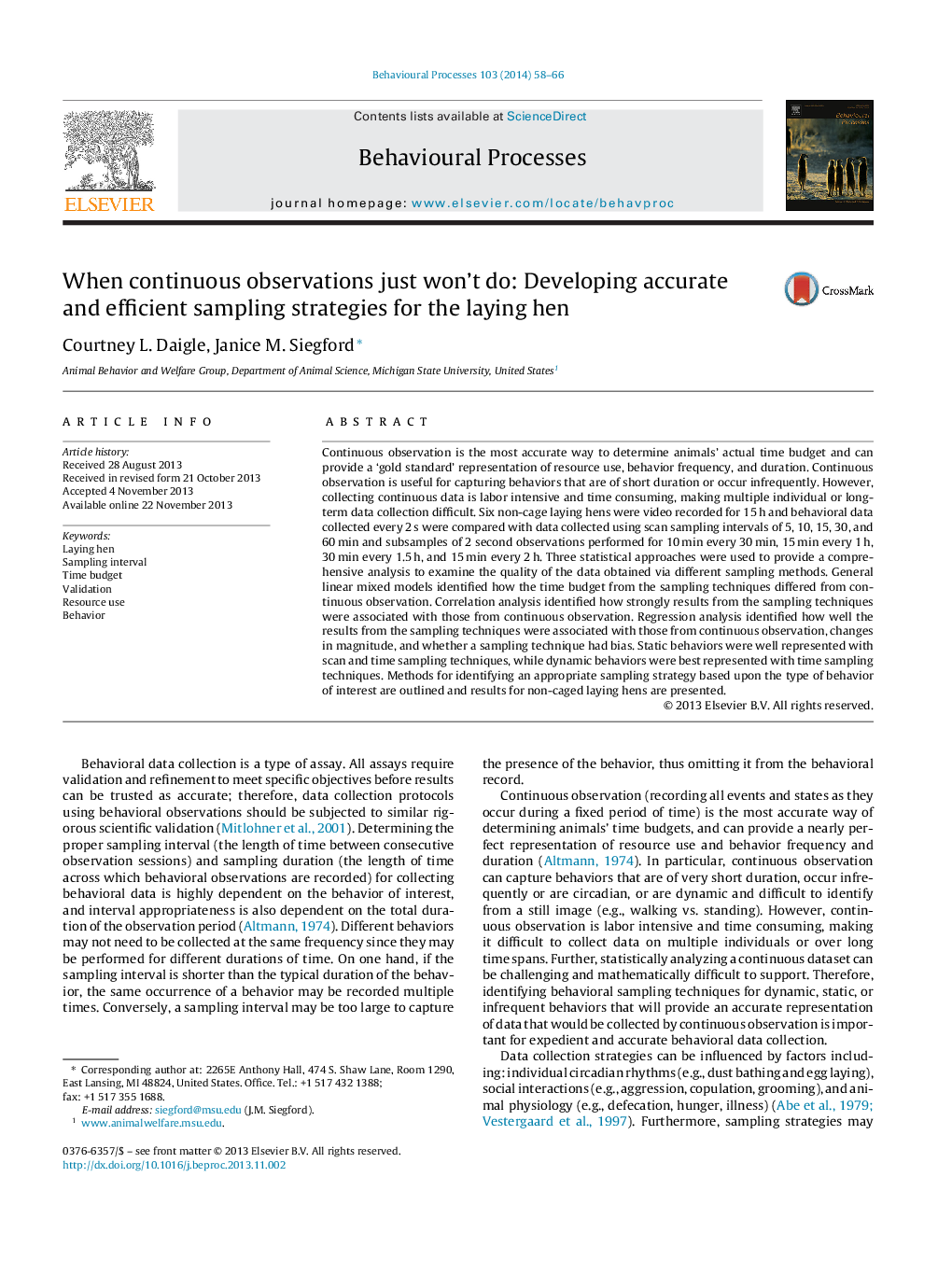| Article ID | Journal | Published Year | Pages | File Type |
|---|---|---|---|---|
| 8497287 | Behavioural Processes | 2014 | 9 Pages |
Abstract
Continuous observation is the most accurate way to determine animals' actual time budget and can provide a 'gold standard' representation of resource use, behavior frequency, and duration. Continuous observation is useful for capturing behaviors that are of short duration or occur infrequently. However, collecting continuous data is labor intensive and time consuming, making multiple individual or long-term data collection difficult. Six non-cage laying hens were video recorded for 15Â h and behavioral data collected every 2Â s were compared with data collected using scan sampling intervals of 5, 10, 15, 30, and 60Â min and subsamples of 2 second observations performed for 10Â min every 30Â min, 15Â min every 1Â h, 30Â min every 1.5Â h, and 15Â min every 2Â h. Three statistical approaches were used to provide a comprehensive analysis to examine the quality of the data obtained via different sampling methods. General linear mixed models identified how the time budget from the sampling techniques differed from continuous observation. Correlation analysis identified how strongly results from the sampling techniques were associated with those from continuous observation. Regression analysis identified how well the results from the sampling techniques were associated with those from continuous observation, changes in magnitude, and whether a sampling technique had bias. Static behaviors were well represented with scan and time sampling techniques, while dynamic behaviors were best represented with time sampling techniques. Methods for identifying an appropriate sampling strategy based upon the type of behavior of interest are outlined and results for non-caged laying hens are presented.
Related Topics
Life Sciences
Agricultural and Biological Sciences
Animal Science and Zoology
Authors
Courtney L. Daigle, Janice M. Siegford,
